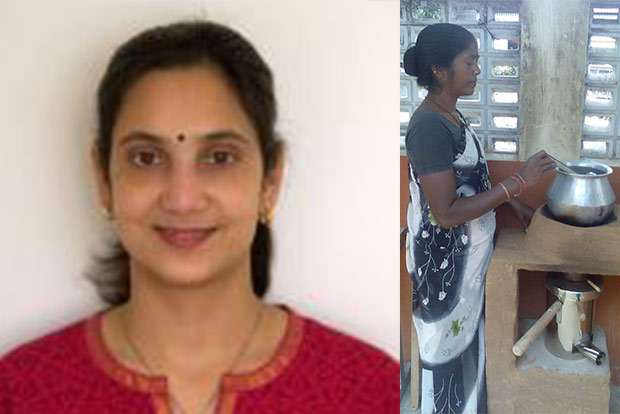Begin typing your search...
A social enterprise that helps villagers earn while they cook
Servals, a Chennai-based social enterprise, is empowering villagers with an innovative cooking stove that has helped reduce their carbon footprint and is earning them some extra income too.

Chennai
Cooking stove smoke is a major contributor to air pollution in developing countries, causing 4 million premature deaths annually and a wide range of serious illnesses. And rural India, with more than 80 per cent households still depending on the burning of biomass to make food, is exposed to smoke with high concentrations of pollutants, resulting in a generation, afflicted with a range of health problems, such as pneumonia and low-birth weight in children, to lung cancer and chronic obstructive pulmonary disease in adults, especially women, who suffer the highest exposure at home. Servals is addressing this disadvantaged section by introducing low-cost cooking stoves, which could also generate income for villagers in the Sundarbans area of West Bengal, a community living below the poverty line.
Sujatha Srinivasan, director, Servals, says, “In most backward communities, biomass is the primary source of fuel for cooking, a heavily polluting technology. It is often young girls, kept back from school, who would be sent out to collect the firewood. With inefficient stoves and long hours in the kitchen, this practice results in a generation of girls who don’t go to work. So, we wanted to make a model that took into consideration the economic, social and environmental factors.”
This was meant to be pioneering technology and to give it a concrete shape, Sujatha collaborated with Moulindu Banerjee, a former colleague at The Gallup Organization, an American management consulting company and an IIM Bangalore alumni.
Moulindu, who has worked on several community-based projects, identified the Sundarbans region for the initiative. “We wanted to create cooking technology that was not only of good quality and durable over seven to eight years, but also one that would reduce the people’s carbon footprint and serve as a means of income,” he says.

Thus they came up with a pilot of 50 Top Lit Updraft Gasifier (TLUD) stoves made by Servals in Kovilambakkam, Chennai, in August 2012. The team helped the villagers install TLUDs, a stove with a double-walled canister (a cylindrical container), which, when fed with any kind of biomass -- from firewood twigs, coconut shells, certain husks to dry grass – during the course of cooking, would generate a by-product of charcoal with huge commercial potential. Families could collect around 20-30 kg of charcoal per month, which would then be bought by a charcoal entrepreneur every month. Servals has tied up with various charcoal users, such as restaurants, using it in their tandoors.
Servals has kept the stoves low-cost with the help of Carbon Finance, a subsidy that is given for green products that have a proven track record of reducing carbon dioxide emissions. The stove, which costs Rs 2,500, is available to farmers at a subsidised rate of Rs 1,000. This innovation has enabled every family to save around Rs 500 per month, recover the cost of the stove within a few months and turn women into home entrepreneurs, points out Sujatha. This ‘Earn while you cook’ initiative has empowered over 11,500 households in the Sunderbans and infiltrated the Assam tea plantation community.
“The economic and environmentally conscious model has resulted in millions of rupees worth of activities, which include buying of chulhas, employing and empowering the rural youth, selling the charcoal, etc. We hope to take it to more communities in the coming months,” says Moulindu.
Visit news.dtnext.in to explore our interactive epaper!
Download the DT Next app for more exciting features!
Click here for iOS
Click here for Android
Next Story



